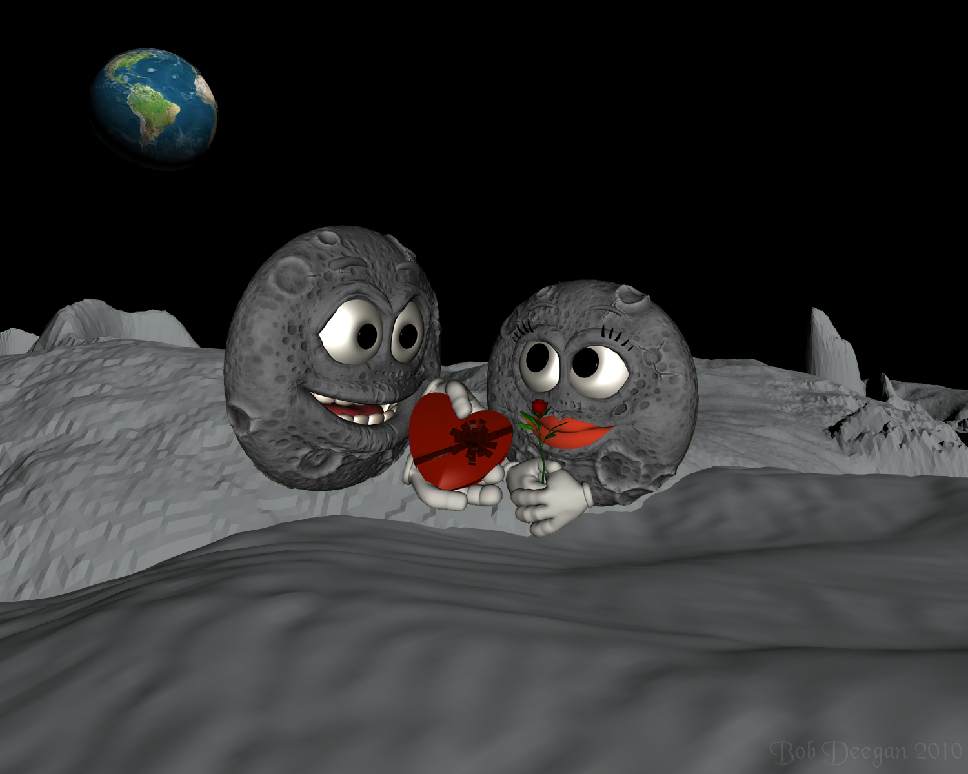
For the week including February 12, 2010

MOONGLOW
The light from the Moon has meant many things to people over the years. Whether it provides you with a bit of romantic lighting for Valentine’s Day, or is just convenient for finding a dropped set of car keys, for thousands of years moonlight has drawn our attention to our closest neighbor in space. But where did the Moon come from? Many people think that the Moon simply has been there all along, a companion of the Earth since it condensed out of the solar nebula along with the other planets. This idea was challenged by the geological findings of the Apollo missions, giving way to new ideas about our old friend.
The theories of the Moon’s origin are wild and fun. Let’s take a look:
It’s Been There All Along: The old favorite. The Moon evolved at the same time that the Earth did. This idea is supported by the Moon’s age, practically the same as the Earth's. Also, the Moon's chemical composition is grossly the same as the Earth’s. But “grossly the same” doesn’t make it. If the Moon and Earth evolved together, how is it that there is so much iron on Earth and so little iron found on the Moon? For this to work, we have to come up with a model where the Earth and Moon evolve together, but the iron sort of goes to one side…
The Catch in Deep Center-Field: This hypothesis suggests that the Moon was wandering through the solar system one day and the Earth’s gravity snagged it. On the pro side this is highly convenient; we don’t have to explain a thing, including how we came up with a moon that’s nearly the size of its host planet. But how is it that we just happen to snag something that’s almost exactly the same age as the Earth? (Did I even mention that the Moon’s oxygen isotope profile isn’t found anywhere else in the solar system except on Earth?) There’s also that physical law stickler called Conservation of Angular Momentum which requires that whatever momentum the Moon brought with it would be added to the Earth’s. I’m afraid that, if we caught it, we would end up smashing through the center-field fence.
The Big Boom: Today’s leading theory, this postulates that early in the Earth’s formation, it was struck by another large body that had been forming nearby. The impact of this Mars-sized object exploded a great deal of the Earth’s outer crust into space where it congealed into the Moon. This explains why the composition of the Moon closely matches the Earth’s outer crust or mantle. If the impact occurred after most of the Earth’s iron had sunk into its core, the Moon would naturally contain very little of that metal. In 1999, NASA’s Lunar Prospector spacecraft revealed that the Moon has a core that represents only four percent of its total mass. When compared to the Earth’s iron-rich core which contains about thirty percent of its mass, this is tiny. NASA believes that the core differences buttress the idea that the Moon is composed of lighter materials that originated on Earth.
Unless otherwise indicated, all content of this web site is the copyright of Robert Deegan and all rights are reserved.
For more information, or to comment, please contact: Bob@NightSkies.org